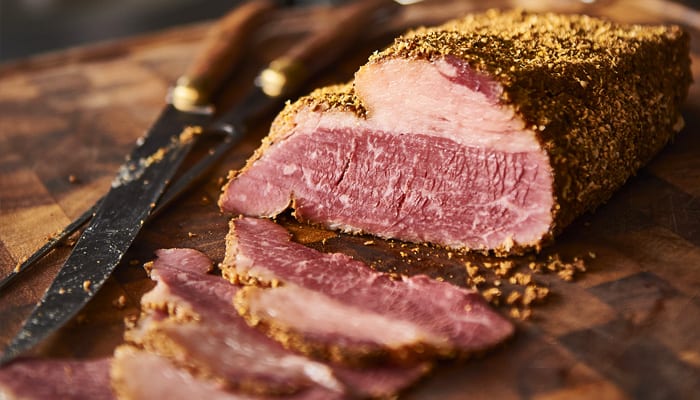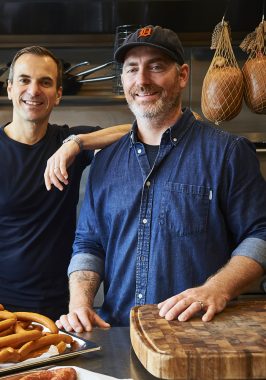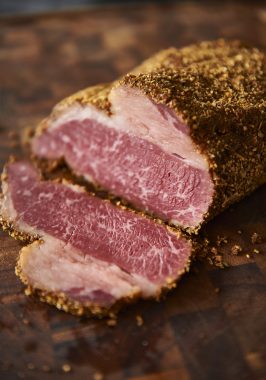Want to be supplied by the best? Make an enquiry

The smell of black pepper and rich, salty brined deli slices conjures images of New York City afternoons, where the best Jewish delis have lines out the door.
Most who have a vested interest in this cured cut will know it originated in amongst the Ottoman Turks, who used to dry and salt-cure meat as a means of preservation. Back then, it was made using a range of meats, most commonly mutton or lamb and eventually, in Romania, goose became the meat of choice.
The recipe migrated along the spice route of Eastern Europe, landing in Romania, where it was adapted and eventually migrated with to the US, New York to be exact, along with the Romanians. As they settled into the Lower East Side of New York, the Jewish Romanian’s began making this preserved deli meat with beef, as it was the most readily available on the market.
These days there are less than 15 of the original Jewish delis left in the city, once thriving with over 1,500 in the height of immigration. The most famous of course, being Katz’s. This stalwart boasts that since 1888, it has produced pastrami using the same recipe. Three-week salt-brined beef is smoked for three days and boiled for three hours. An equation for success.
Growing up in the neighbourhoods of upstate New York, and spending his younger years cooking in the kitchens of the city, pastrami is like a sacred pastime for our Cook & Sons Head Chef, Gregory Llewellyn. The first point of focus for Llewellyn upon coming in-house was to perfect our smoked meats range, and he hasn’t disappointed.

A particular hero of the range is the 2GR Full-Blood Wagyu smoked pastrami. The premium quality of the meat brings a very special richness and tenderness to the finished product.
Taking inspiration from the traditional, unflappable, Jewish delis of the city, Llewellyn sticks fairly closely to tradition injecting the choice brisket cut with a brine of salt, brown sugar and spices and letting it brine in the juices for a week, before drying it to create the pellicle from the dried sugar. Once finished drying, the pastrami is crusted with a traditionally inspired mix of coriander, black pepper, kibbled onion, brown sugar, onion, chilli, garlic and mustard seeds. Finally, it’s cold smoked and slow cooked for 12 hours.

It may take considerable time and effort to make the delectable favourite, but it’s well worth it when the finished product is thinly sliced and eaten on it’s own or accompanied with a bit of gourmet hot English mustard.
